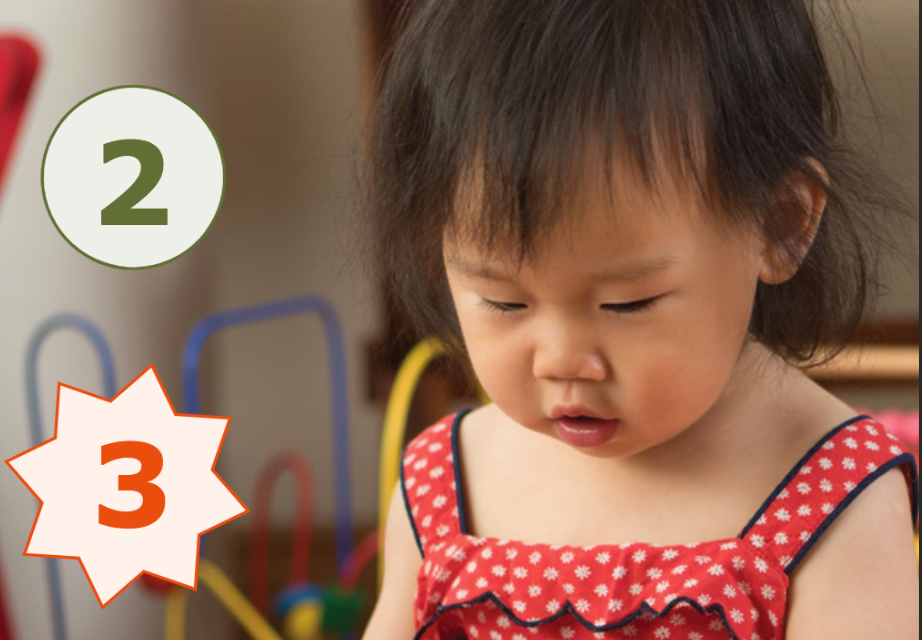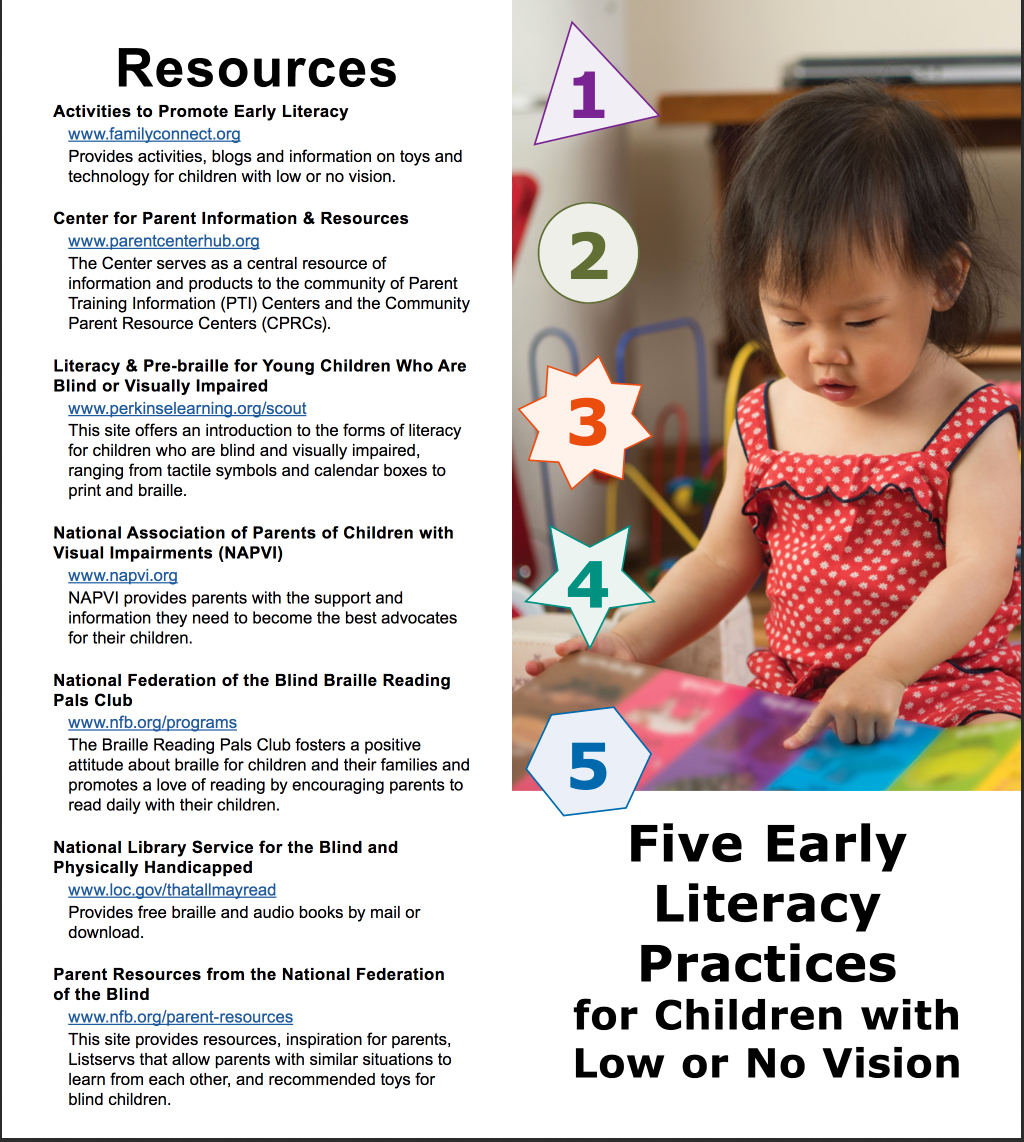
Resource
Five Early Literacy Practices for Children with Low or No Vision
Five early literacy practices for young children who are blind or visually impaired
Five early literacy practices for children with visual impairments highlighted by the New York Public Library are:
-
Reading
While a parent of a sighted child might run their finger under words while reading the sounds aloud, the caregiver of a blind child would move the child’s hand to touch braille letters while speaking them aloud. This is important even for very young children, to begin associating touch with words. While reading, include real objects in the story to ground it in real associations and connections. Describe the images out loud.
-
Talking:
Describe things your child hears, feels, smells, and tastes. For example, “That loud grinding is the garbage truck picking up the garbage again.” Use a wide variety of descriptive words.
-
Playing:
Young children with low vision may move around their world less. Encourage them to explore with play. This teaches problem-solving, imagination, new words, and the motor skills needed for reading braille. Provide toys with lots of sounds and tactile interests, and encourage your child to grasp, move toward, or interact with them.
-
Writing:
Provide thick, dark markers for high contrast on white paper, or make textured lines by pressing hard onto paper on a semisoft surface or with a commercial tactile drawing pad. Encourage tactile art with textured or scented paint, wax sticks, even cooked spaghetti. Provide dots to create play braille. Use sequins, googly eyes, or children’s clay.
-
Singing
Singing is a fun way to learn about language. When we slow language down, the sounds that make up words become more evident. Rhyming helps too. Singing helps us learn new words and improve our memory.
- Sing the alphabet, nursery rhymes, and rhyming songs.
- Make up songs about your day or what you’re doing right now.
- Clap along to songs to demonstrate syllables, or add in finger movements or actions to expand connection to the story
Other areas addressed are:
- Braille for independence
- Adapted activities and tweaked skills
- Pictures matter
Download their PDF brochure. It includes a list of useful organizations, and then covers ideas for reading, talking, playing, writing, and singing with children.

